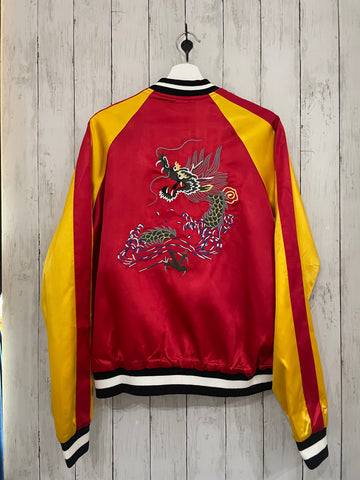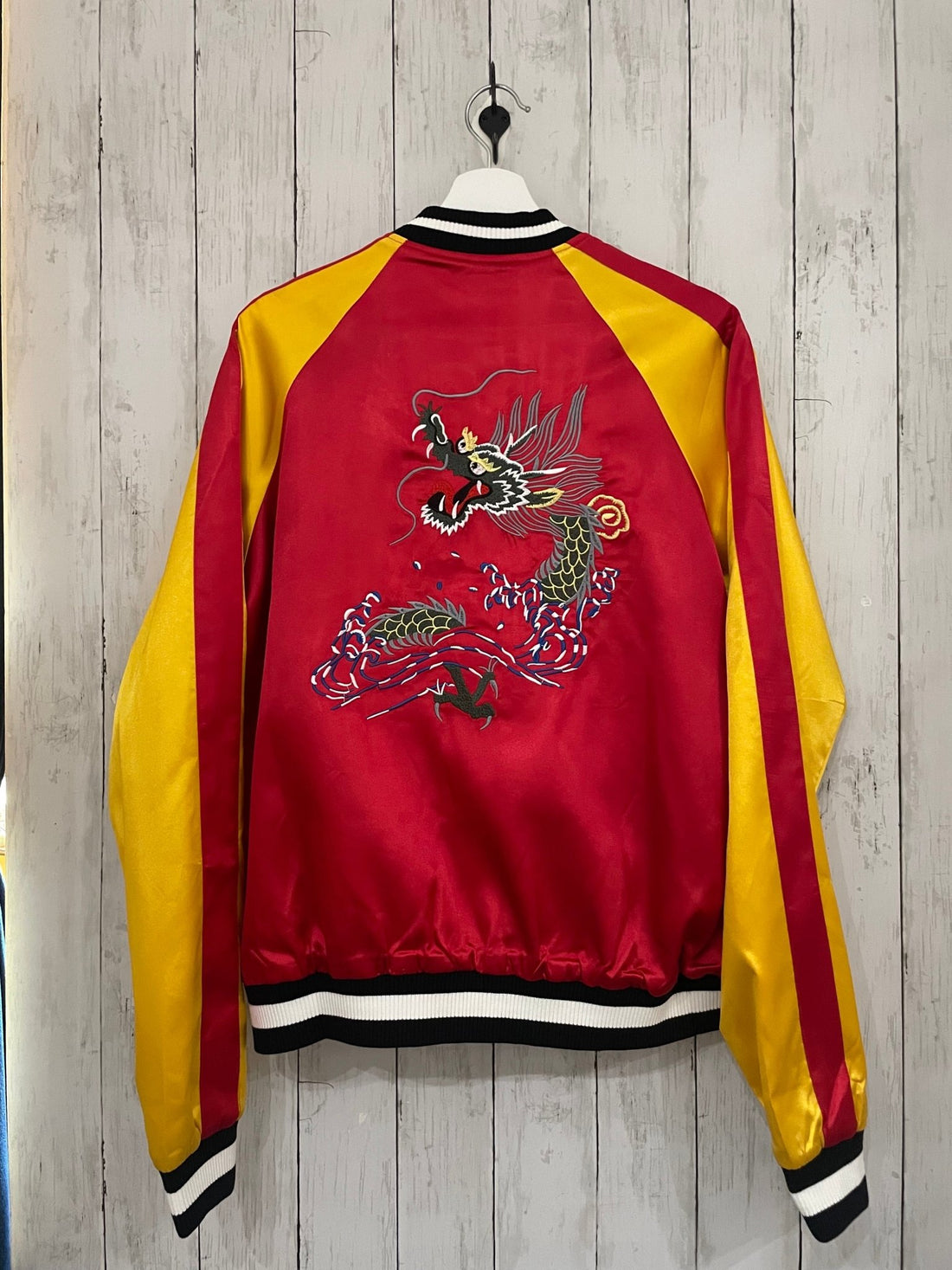Los Angeles, CA –– Pharrell. Gosling. Mick Jagger. What do these artists and tastemakers share in common with American GIs returning home post-World War II? 
A supreme taste for something special.
Inspired by our trips to Tokyo and the evolving style that emerged post-World War II by returning American soldiers, our latest limited edition satin souvenir jacket pays homage to archival 1940's Japanese designs with the classic silhouette of an American baseball jacket.
What's a Sukajan?
In a faithful effort to preserve the past, Res Ipsa designed its original souvenir (in Japanese: sukajan) jackets in Tokyo, Japan. "The “Suka” refers to the city of Yokosuka, the largest naval base in the Far East and the “jyan” refers to a jumper or a jacket. In short, the jacket was born in the city of Yokosuka."
The souvenir jacket takes its origins from the post-World War II years when American soldiers stationed in Japan brought home these ornate, handmade jackets as a souvenir of their time in the Pacific theater (hence the name). Many jackets were constructed with silk and embroidered with Japanese local artwork and imagery. Sometimes the jackets were even made using excess silk salvaged from military parachutes.
Originally and ironically designed and marketed in shape of American baseball and varsity jackets for American sailors passing by Japanese boutique shops, the cultural evolution of the jackets became defiantly anti-American in Japan. In post-war Japan, the popular establishment in the 1960's were adopting the preppy Americana style of the time, so often youth sought out these jackets as statement pieces symbolizing their rebellion to American conformity and style. This was especially true among working class Japanese youth in the 1960's. At the time, the jackets were widely associated with gangs and among criminals in Japanese film.
As time passed and the style spread throughout the US and Europe, as did anti-war movements and counterculture, the jackets became more popularly worn and sought over by communities outside of military culture. Mick Jagger, an early counterculture trendsetter, wore a souvenir jackets on tour, which helped popularize the style to even more mainstream audiences.
Design & Details
Our souvenir jacket features an embroidered dragon and an embroidered eagle faithful to an original 1940's archival design. In Japanese, the word for dragon, "ドラゴン ", is ryū or tatsu, and is a mythical animal that symbolizes power, wisdom, and good fortune.

We offer two options in one jacket: our jacket is reversible. On one side we feature a green body and with white sleeves and on the other side we feature a bold red body with yellow and red striped sleeves. Other features include a metal YKK zipper, elastic wrists and waistband, two front pockets and opposing embroidered dragons and eagles.
How To Style in a Souvenir Jacket
---
#ResIpsa
#OurBrandisTravel



